The Decked Canoe Archives
Assembled by Tim Gittins
International Canoe Class
from Uffa Fox 'Power And Sail'
The year 1936 was an important one for the canoeing world, as late last year Gordon Douglas had challenged the Royal Canoe Club with Nymph II for the New York Canoe Club's international trophy, which Roger de Quincey and I had won as a team in 1933 on Long Island Sound with Valiant and East Anglian, when we raced against Leo Friede in Mermaid and Walter Busch in Loon. This Cup was first raced for in 1886 (fifty years ago), when the challengers were W. Baden Powell with Nautilus and Walter Stewart in Pearl, but the Americans were successful in their defence against all challengers till three years ago.
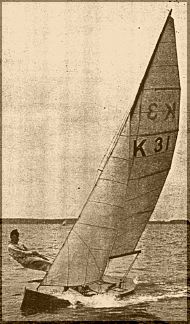
Roger De Quincey Sailing Wake
Because of the challenge by Gordon Douglas the races throughout the season held by our Royal Canoe Club were interesting, as a defender had to be chosen from the Club, and the longer the actual selection could be put off the more chance there was of selecting the right man. It was not until the canoes had raced through Cowes Week that Roger de Quincey was finally chosen, with his new canoe Wake, with which, as it proved, he successfully defended the Cup.
The plans of Wake show the fastest canoe ever yet designed or built, for on all points of sailing Wake could outsail our own boats, while she was able to defeat the Canadian challenger, even in the light weather that prevailed for the series. This was the only type of weather in which the challenger stood a chance at all, for like most American canoes, she had to be held upright once her mast was stepped to save her from capsizing, whereas our canoes come in, pick up their moorings, and their crews stand and walk about on their decks quite happily, this alone giving some idea of the ability of the two different canoes in a breeze of wind.
The lines of Wake show that she is a development of Gallant. Actually she is the fourth of a series of lines, Solitary Snipe being the first, Gallant the second, Radiant the third, and Wake the final development of one hull.
The lines show a very deep chested canoe with a long clean run, while the sections show she is flat in the floor and very powerful, and able to be sailed in almost any wind, for in this country summer generally brings strong winds, so that every season while the other countries are dying of the heat, we always say, "This is the worst summer we ever had." The light weather boat, therefore, is of litte use in England, with the result that when we, who have sailed canoes in England, go to America and sail them there, we have our legs pulled because we are always talking of a powerful canoe, and the reason why Wake's lines are so instructive is that besides being powerful, she is very fast in light airs.
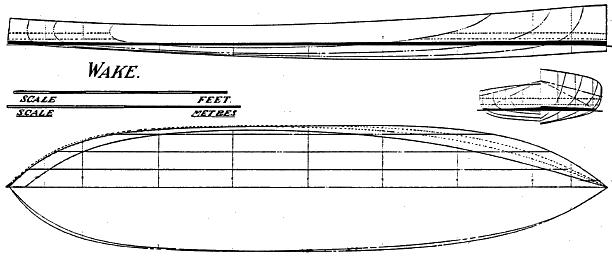
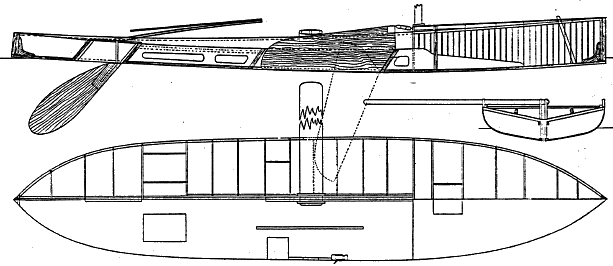
Length, overall - - 17 ft. 0 in.
Length, water-line - - 17ft. 0
in.
Beam - 3 ft. 6 in.
Draught - 5 in. and 3 ft. 6 in.
Displacement - 453 lbs.
Sail area - 106.65 sq.ft.
Owner,
Roger de Quincy
Designer, Uffa Fox
Builder, Uffa Fox
Her construction plan shows the mast stepped on the deck, which is in itself a godsend to these canoes, for by pulling a pin out, the mast can be laid flat on the deck. Such a mast does not strain the bottom of the hull as the others do, for the deck is taking a great deal of the down thrust.
The rudder, it will be noticed, slips down through the trunk abaft the keel case, and whether this is right or wrong we do not really know, for the Americans have one hung on the stem, and we have ours shipped below, and it might easily be that the American is right.
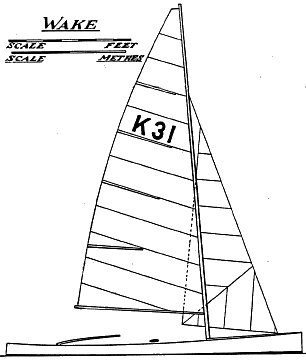
The construction section shows the V'd cockpit, which drains any water shipped down through the drop keel slot right away; this cockpit extends from her mast right through to the stern, and in a seaway the waves rush right out over the stern without stopping the boat as they do when they hit against the bulkhead at the end of an ordinary watertight cockpit, though this has the disadvantage of letting the waves carry the main sheet right out over the stem where it is awkward to recover. The five hatchways are placed so that the forward one and the after two can be used for sponging out the hull, while the two smaller ones amidships are fitted so that, in case of trouble, the sliding seat gear can be easily reached under the deck. Generally speaking the arrangement on Wake is the best we have, for throughout the designing and building of this canoe, Roger helped with ideas and brain waves, and two sets of brains are always better than one.
The sail plan shows our normal cutter rig, which we think to be far in advance of the ketch rig used by the Americans, and future years will, I am sure, show that they will come to think as we do, though it will take probably two or three contests to convince them of this. So in Wake's plans we see the latest ideas and developments of the sailing canoe as developed in this country.
Nymph is another cup of tea altogether. Both fore and aft ends are alike, there is no flat run, no deep chest under the mast. She is exactly the same shape as the canoes in America of 1888, as will be seen by comparing her to the lines in W. P. Stephens' book on Boats and Canoes published then.
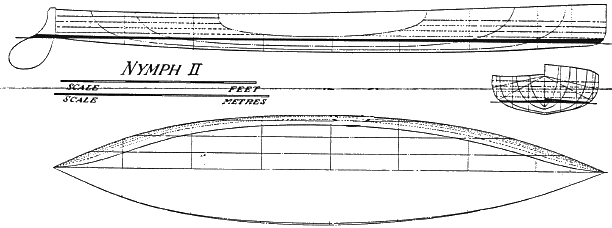
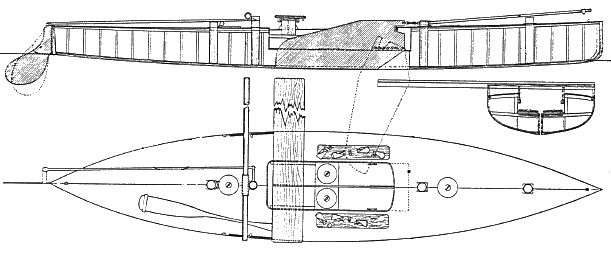
Length, overall - - 17 ft. 0 in.
Length, water-line - 16ft.
19.5 in.
Beam - 3 ft. 4 in.
Draught - 4 in. and 3 ft. 6.5
in.
Displacement - 412 lbs.
Sail area - 104.5 sq.ft.
Owner,
Gordon Douglas
Designer, Fred Gilbert
Builder, Fred Gilbert
In the deck plan, too, we see that the water-lines and deck line are the same for the fore as the after body, far different to Wake's, where we see the water-lines finer forward than they are aft.
In the construction plan we see four mast holes in the deck, because Gordon could not make up his mind whether a cutter or ketch rig was the better, in spite of the fact that in 1933, with a very heavily built canoe (because she was built to the British as well as to the American rules), I won their National Canoe Sailing Championship, and Roger and I with sister ships won the intemational trophy with a cutter rig.
Nymph has a self-bailing cockpit, and this we adopted from the Americans, for when Roger and I went to America our canoes were not self bailing and we were never able to sail them fast on the reach as a result, for we shipped so much water that we lost by it when beating to windward.
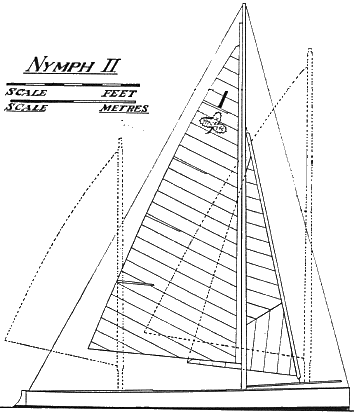
In the sail plan we see both the ketch and cutter rigs used by Gordon. In his cutter rig he used a foremast, which he was able to swing round when running, and though this helped, and kept the luff stiffer on a wind, it is doubtful whether such a device is an advantage for a canoe.
We in a cutter country perhaps naturally look down on the ketch rig, but it enables a canoe sailor to belay his sheets, and then he has only to move his sliding seat and his tiller when tacking, whereas we with a cutter have to handle jib and main sheets as well as our tiller and sliding seat, just double the work. Even so the cutter canoe comes about far better, as was proved in this year's international contest, when Roger always outmanoeuvred Gordon in tacking.
These two entirely different canoes represent the best on this and the other side of the Atlantic, for before Gordon came across here he had won fairly easily all the races in which he had taken part. A study of the plans of the two canoes will enable us to appreciate the races, for they tell us exactly the types of canoe used here and in American waters. When we compare them together, perhaps the most astonishing thing is that Wake, with her larger wetted surface, could defeat such an easily driven hull as Nymph, in wind blowing only 5 to miles an hour.
As the international contest is the most important, it is perhaps best to start with that and the races which lead up to it, for round it the whole of our Canoe Club's races were arranged. Gordon, having been chosen for the Olympic Games, asked for this contest to be raced after the games in Germany, and so the dates chosen were August 20, 21 and 22.
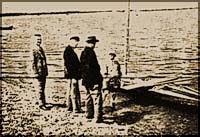
Once Nymph's mast was stepped she had to be held upright ...
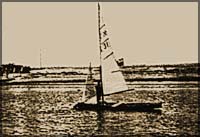
... while Wake was so powerful and stable that her helmsman could even go on her foredeck with her sails set
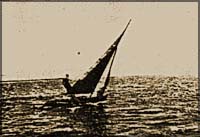
Not only must a man, sailing the American type of canoe, have the balancing ability of a tight rope walker ...

... but he also must be a snake charmer. Bill Bartholomew to the left, who we had hoped would race with us, Captain Boyd holding canoe while Gordon arranges details before the last race.
As is well known, Cowes Week starts with the first Monday of August, and this week was chosen for the selection of Britain's defender for the Cup. Nine canoes took part in the Island Sailing Club's Cowes Week canoe races, and almost all the week the winds were strong and trying for these tiny craft. Paul Clift in Valiant came out top of the week, as he and Valiant enjoy heavy weather, and she won three of the six races, while Gallant won two firsts and Wake, whom we selected as our defender, won only the first two, Solitary Snipe winning two seconds and two thirds and Cecil Knight's Britomart one third, the four other competitors usually finding the wind too strong for their liking. Wake had only just been launched, and had carried away a light weight hollow sliding seat built up of three-ply, which was immediately replaced by a solid and stronger one. During her races she had shown that she was capable of higher speeds than any of the others, and we thought she would also give a good account of herself in light weather. In addition her helmsman, Roger de Quincey, had the greatest experience of all in international racing, and whether it is in a canoe or in a "J" boat a man representing his country has a great responsibility. It was as well to have someone who had been tried and found good under such conditions.
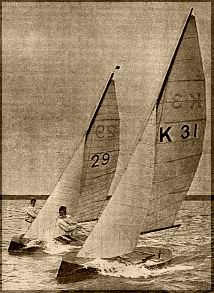
Tuning up Wake at Cowes.
Micheal Crean loaned Solitary Snipe
(29) to me for our tuning-up races at Cowes, at the end of which the
defender Wake and Roger were almost perfect.
Michael Crean kindly lent me Solitary Snipe for the week following Cowes Week, for which time Roger stayed with me and we raced every day, which besides being good practice for him enabled us to tune the boat up, so that when she went across to Chichester for the three Challenge Cup races and the International Trophy races, there was very little wrong with her.
Throughout these tuning up races at Cowes, Wake with her helmsman proved how wise the Royal Canoe Club's choice of their defender had been. Meantime Gordon Douglas in Nymph had been racing and tuning up in Chichester harbour, and had done exceedingly well against the canoes there. The first time Nymph and Wake met was in the first heat for the Royal Canoe Club's Challenge Cup, which was sailed in a light southerly wind round the triangular course in Chichester harbour, four rounds being sailed. Valiant and Britomart led Nymph over the starting line, but on the reach to the eastern mark, Nymph went ahead and rounded with a lead of 1 1/2 minutes. Wake had started three minutes late, and had to sail through the fleet, consisting of Brilliant, Valiant, East Anglian and Solitary Snipe, before she could start in to chase Nymph, who quietly stole away from the fleet and eventually won by seven minutes. This in itself was the finest thing that could have happened, for Wake awakened up with a start and realised that she had to put forth her utmost to win this contest, which she did, winning the next two races for the Challenge Cup, so keeping it in this country.
The second heat was sailed over the same course and again in light weather, but this time in an anti-clockwise direction, and was won by Wake by 4 1/2 minutes. The final heat, with a light westerly wind, was again won by Wake, this time by 5 minutes, the British boat showing superior qualities in the beat to windward in each of these races, just as Valiant and East Anglian had, when Roger and I took these two canoes to America, for as soon as we started poking to windward we left the American canoes astem.
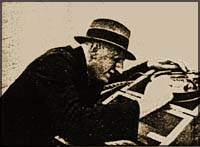
Captain Boyd, R.N., plotting out the course.
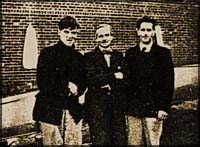
>Canoeists live long! Walter Stewart, the first challenger (fifty years ago) sits back on Wake between Roger and Uffa.

Wake slipping through the lee of Sonlitary Snipe during the tuning-up races at Cowes
These three races showed how wise the choice of Wake had been, and that nothing had been left to chance, for all the races were held in light weather which exactly suited the small bodied American type of canoe.
Next followed the International Cup races. The committee selected by the Royal Canoe Club to run and arrange these races was H. J. Deane (Captain), H. J. Campkin, Lieut.-Commander R. T. Janson. Captain H. P. Boyd, R.N., and Uffa Fox. The course was plotted out by Captain Boyd and Lieut.-Commander Janson.
Lieut.-Commander Janson kindly lent his comfortable motor cruiser as a committee boat for the races, and this boat proceeded to the leeward mark at the beginning of each race, for the American Canoe Association has a rule, which reads "All races shall be started to windward when practicable, and under a time limit," and there is no doubt this is a fine rule, for it enables both boats to start clear of each other without risking a foul, and generally means that they will be fairly well apart at the first mark. Every race in the world should be started with a beat to windward.
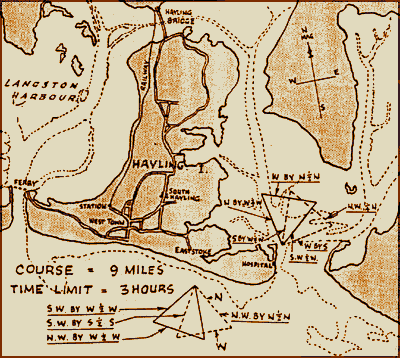
First Race, Thursday August 20th 1936
The wind at the start was westerly and blowing only six miles an hour, the tide running 1 - 2 knots, so the start was at the buoy in the Chichester arm of the harbour. The two canoes fighting for a position were late over the line, a point that does not matter when only two are racing, as the idea is to be the first of the two over, and Roger won this sparring contest, crossing the line forty-two seconds behind the gun, Gordon coming over fifteen seconds later and to leeward of the leader. The difference in the weatherly qualities of the boats was most marked, as Roger could lay 1 1/2 points higher to windward than the challenger, and the two on the starboard tack opened out from each other, Roger all the time soaking up to windward as though he were being pushed bodily sideways, Gordon sagging to the south. At this time the sun had gained a great deal of strength, and away inland the clouds on the top of rising currents told us that the wind would come in from the sea and get stronger as the day went on, which meant that it would suck in due south through the mouth of Chichester harbour quite soon; on the committee boat we had time to watch the competitors and every cloud in the sky, as with a wind six miles an hour things were not happening very fast. Gordon, who had sagged away to the south, benefited by this shift of wind, for it headed him right off, and when he tacked he could lay the mark. He was now sailing in a southerly wind which was slightly stronger than the westerly streak in which Roger was still sailing. The latter now tacked to the south. On his new tack Gordon was tramping along in style, and as he approached Roger it was seen that he was weathering him. When he had done this, he tacked on Roger, who also tacked, and Gordon followed on top of him, but the Canadian canoe could not tack as easily and quickly as the British defender, so Gordon fell back a little and Roger with his wind clear to leeward soon pulled up and gave Gordon a lee bow, so that he was forced to tack. From then on Roger went away, rounding the first mark with a 200 yards lead.
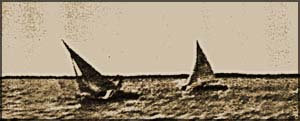
Though only blowing seven miles an hour Gordon often had to get off and under his slide to prevent a capsize while Roger to windward was comfortable.
The reach to the second mark brought no change, and Roger gybed round this one minute and five seconds ahead, the wind being down to two miles an hour. At this time it was a run back to the finishing line, and Gordon swung his jib round and closed the gap slightly, then a breeze came and Roger opened up once more and finished the first round one minute ahead. As the wind had gone slightly southerly, most of the windward work had been taken out of the race, and at the end of the first round Roger tacked at once, laying well up for the weather mark. Here he made a mistake by not covering Gordon, who held on the same tack, working out to the south, and was soon in a much stronger breeze, and though slower to windward, because of this better breeze he weathered Roger, and was now on the starboard tack but again, Gordon's canoe, slower in stays, was unable to cover Roger, who slipped through to leeward. As the two were now sailing in the same breeze, Roger immediately began to draw away and had a thirty seconds lead at the weather mark. Half-way along the reach on the second leg of the triangle Gordon pulled up level but to leeward, the two swinging round the mark together, Roger having to give room. As his was the inside canoe, which was also the weather berth, the Canadian naturally took the lead once they had gybed, and at the end of the second round led by fifteen seconds. Gordon again held on to the south for the stronger breeze there, and Roger tacked and laid straight for the weather buoy with his sheets slightly eased, as the wind had by now established itself in the south and was southerly all over the triangle. There is no doubt that while at the end of the first round Gordon was right and Roger was wrong in his tactics, this time Gordon was wrong and Roger right (no man yet has ever sailed a perfect race), and so the latter took the lead once more.
The wind had now reached seven miles an hour, and though still light was enough to make the Canadian use the full length of his sliding seat, and Roger half the length of his. This time when Gordon tacked to the westem mark he did not jump out on the end of his slide soon enough and she capsized; and though this sounds amazing to us in this country, it must be borne in mind that all the American canoes are so fine and cut away in the bottom that they have no stability whatever. Once their masts are stepped they capsize unless they are held up, whereas our canoes are left on their moorings with their masts standing for days on end. In fact, a man sailing one of the American canoes is exactly like a man walking a tight rope, he balances her all the time with his weight on the sliding seat, and his canoe will capsize if he is forgetful for one second only, everything having to be judged and timed to a fraction of a second.
This day Gordon was using a very heavy oak sliding seat, and the extra weight was just enough to make the righting of his canoe a matter of minutes instead of seconds, for though he generally gets his canoe up in five seconds, it took him on this occasion a minute and a half, all of which time Roger was reaching for what should have been the weather mark, and led by two minutes round it.
The breeze was now coming stronger, and with the sun burning up the air inshore, there was no doubt it would increase through the afternoon. So in the stronger breeze de Quincey gradually drew away throughout the rest of the race, and led by three minutes and forry-five seconds, there being no windward work at all after the second round, and very little even in that. The nine mile course took one hour and forty-nine minutes to complete, which is a little better than 4 1/2 knots average speed. The wind at the finish was blowing foutteen miles an hour. The first round took thirty-seven minutes to complete, the second thirty-two minutes, the third twenty minutes, and the last round only nineteen minutes, almost half the time of the first. So England won the first race for the New York Canoe Cup.
Second Race, Friday August 21, 1936
Douglas asked for a change of course. There was no doubt the course inside was more suitable to him than the one out at sea, where the wind would be always stronger than in the harbour, so he decided against the alternate courses in the open sea, but the legs of the triangle in the harbour were shortened so that they were half a mile long; On this course the canoes had to sail six rounds to make up the nine miles. The course was shortened by moving the southernmost buoys to the north.
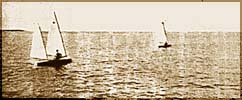
As it was a beat to windward Roger opened out.
The wind was again gentle, blowing seven miles an hour at the start, and looked like easing rather than hardening. At the start of today's race the two canoes broke through the line within one second of gunfire. De Quincey to leeward had his bow just ahead, so immediately after crossing the line Douglas had to tack to the south to get his wind clear, though he was to weather, and had Roger been a second later the Canadian would have smothered him and forced him to tack. It was one of the best starts I have ever witnessed. As it was a beat to windward, Roger went away from the very beginning, and led by exactly one minute at the weather mark, and on the reach increased this by seven seconds. On the run home he further increased his lead to two minutes fifty-one seconds, increasing it on the second round to four minutes. Gordon Douglas had chosen his ketch rig for today's race, but it did not seem to be any better than the cutter rig, in spite of the fact that he was sailing and handling his canoe better with this rig; with the wind remaining true in direction there was no doubt de Quincey would win, in spite of the fact that at the end of the second round it had died right down to four miles an hour. At times he was three quarters of a mile ahead.
With a limit of three hours for the nine mile course, it was doubtful whether Roger would complete it in the time with so light a wind. It meant that each round had to be completed in half an hour, and the fifth round took more, for at times the canoes were in very calm spots and hardly moving. However, this was the only round which was so slow, as the wind picked up a little for the last round before it died away altogether. The defender finally won by five minutes fifty-seven seconds, the course having taken 2 hours 30 minutes 17 seconds. By winning two straight races de Quincey was successful in his defence of this trophy.
The full-bodied defending canoe, built to the maximum dimensions, had defeated the challenger with its finer under-water body in the light weather that prevailed. In the trial races in Long Island Sound, Nymph II had proved superior, on all points of sailing, to the best canoes America had.
Immediately after the races the Royal Canoe Club met, and as a mark of their appreciation of Gordon Douglas for coming over and racing so well they elected him an honorary member, so at the dinner that night, when the trophy was presented to Roger by Mrs. Rex Janson, Gordon was wearing the Club necktie, with its crown, the letters "C.C." and the double-bladed paddle.
The Vice-Commodore, Lieut.-Colonel Roylance, was in the chair. In his speech he explained that Gordon should not feel hurt at the Vice-Commodore's presence in the chair, for the Canoe Club at the moment was without a Commodore; their late Commodore, having had to decide between continuiiig the Commodoreship and becoming King of England, had chosen to be King.
Excellent and cheerful speeches were made by Cordon Douglas and his father George Douglas, H. I. Deane (Captain of the Club), Hugh Campkin, Lieut.-Commander Janson and Captain Snell. After Mrs. Rex Janson had presented Roger with the trophy, Roger made his little speech, while I, too, bad to stand on my hind legs and amuse the crowd, finishing my speech by presenting Gordon with a complete set of Wake's plans, for an exchange of ideas is always fine for the sport, and if it were the rule that the winner of any international event presented the loser with the plans of his vessel, the sport would be improved throughout the world. These plans bring America right up to us in canoe design, and there is no doubt the next contest for the New York Canoe Trophy will be keener than ever before.
From Chichester harbour the canoes made for Aldeburgh for their Annual Meet. While there I saw the race for the Novices Cap, but having won the Challenge Cup and the De Quincey Cups I was barred from entering, though, not having raced a canoe since Roger and I lifted the International Trophy from the Americans in 1933, I felt only able to race against novices. In this race there was a fine fleet of ten starters. Charlie Dunn in the old Mayfly, hitting the line with the gun, led the fleet. All ten had crossed the line within ten seconds of the gun with the exception of Britomart, who was the wrong side of the line and had to come back. Cyril Stollery in Radiant led round the first mark, with Mayfly close astern, and these two had a fine battle on the beat to windward, passing and re-passing each other all the while. A. C. Wickman in Wake, though it was his first ride on the sliding seat of a canoe, was doing well until he forgot his sliding seat stuck out over the side of his canoe some four feet, and hitting a moored dinghy with this jambed it, so that it would not slide and he had to retire. Solitary Snipe fouled Jest and retired. Defiant also retired when lying fourth. The final order was
NOVICES CUP
| Canoe | Finishing Times h. m. s. |
Result |
|---|---|---|
| Mayfly | 4:7:32 | 1st |
| Radiant | 4:8:10 | 2nd |
| Gallant | 4:8:34 | 3rd |
| Jest | 4:10:22 | 4th |
| Brilliant | 4:13:20 | |
| Aquamarine | 4:14:59 | |
| Britomart | 4:17:03 | |
| Wake | jambed sliding seat - retired | |
| Solitary Snipe | fouled Jest and retired | |
| Defiant | lying fourth did not cross finishing line | |
Mayfly, the winner, was designed thirty years ago by Linton Hope, and has now won the Novices Cup on five different occasions; fitted with a sliding seat, she is able to hold her own with the fleet in the light conditions that prevailed for this race, but it takes a good helmsman to bring her in ahead, and there is no doubt that Charlie Dunn will have great difficulty in sailing a better race than the one with which he won the Novices Cup by 38 seconds from Radiant.
The De Quincey Cup
First Race. Light North-west wind. Course, 10 Miles
There were four competitors for this Cup: Defiant, just purchased by P. V. Mackinnon; Britomart, F. C. Knight; Gallant, loaned to Gordon Douglas by Billy de Quincey, and Wake, Roger de Quincey.
Wake led at the start, but lost her lead to Defiant towards the end of the first round by going the wrong side of the river, these two canoes having had a ding-dong fight throughout the race. Britomart carried away her sliding seat and had to retire, while Gordon, in a strange canoe, found the tiller and jib sheets with the main sheet and sliding seat a little too much for him, and so the race really rested between Defiant and Wake, Defiant finally proving the winner.
Second Race. Course, 10 Miles Wind light north-west, veering easterly and lightening towards the end of the race.
Defiant was too eager at the start, but quickly returned and was in the lead before one mile of the course had been sailed, and was never headed again. Her small rudder enabled her to sail over the flats on the run, while those with the deeper rudder had to make a longer course, and it seems that a lifting rudder would be an advantage on such an occasion and well worth designing and making, for the lead the shallow rudder gave Defiant enabled her to draw away and, with the lightening wind, win by five minutes. A 16-footer, she excels in light weather racing. This is the third year in succession that she has won the De Quincey Cup, and with such a helmsman as P. V. Mackinnnon she will be hard to defeat next year. In buying Defiant he has done exactly what Hugh Campkin did many years ago when he had Tritonelle designed and built for him, Cammie from the kindness of his heart creating a little lady for the Tritons, for till then there was no female of the species. He had tried several times to win the Novices Cup, and hoped to do so with Tritonelle, but unfortunately he won the Challenge and de Quincey Cups, which automatically barred him from racing in the Novices, and so Bee Mackinnon has joined the sad band of brethren like Hugh Campkin and myself, who will never be able to win the Royal Canoe Club's Novices Cup.
In winning the Championship of the Alde, Roger in Wake sailed extremely well, completing the sixteen mile course in two hours, an average of 8 knots. For the last three quarters of a mile against the ebb tide Wake averaged 14 knots through the water as near as can be judged. In sailing round this course 6 1/2 minutes faster than the Bjarne Aas designed 8-metre Sposa II, Wake, the smallest in the race, created a precedent, for during the last ten years the largest boat has always won, but this year the smallest, a canoe, won the Championship of the Alde.
As will be seen from the following list, the cups and prizes were shared out between no less than eight different canoes, which, in itself, is a very fine thing, for if one canoe had run away with everything, her helmsman would get to think he could not be beaten.
| Wake | Roger de Quincey | International Cup |
| Challenge Cup Sir Basil Eddis' Prize | ||
| Seamanship Trophy | ||
| Championship of the Alde | ||
| Defiant | P. V. Mackianon | de Quincey Cup |
| Venture | Eustace Clarke | Knowles Bowl |
| Solitary Snipe | M. Crean | Sailing Mates Average Cup |
| Gallant | Billy de Ouuacey | Murphy Howard Cup |
| Mr. George Pritt's Prize | ||
| Mayfly | Charlie Dunn | Novices Cup |
| Valiant | Paul Clift | Best average during Cowes Week |
| Nymph II | Gordon Douglas | Hayling Island Sailing Club Regatta |
| 2 cups. | ||
| Brilliant | P. V. Mackinnon | Hayling Island Sailing Club Regatta |
| 1 cup. | ||
| Defiant | Dick Orton | Nautilus Cup for Cadet Members |
Early after the war there were few active sailing members of the Royal Canoe Club, and the Ancient Mariners, such as R. A. Smith, Hugh Campkin, H. J. Deane, W. B. Stathan and R. C. Anderson and Company, kept the Club going until these youngsters, too young to be killed in the 1914-18 war, had grown old enough to own and sail canoes, for everyone on this prize list is under 24 years of age. The fact that there were ten starters in the Novices Cup race speaks well for the future of the Canoe Club. It will be some forty years before these novices and cap winners need stop sailing canoes, for the sliding seat is taking all the physical strain off canoe sailing and more are being attracted to this exciting and exhilarating sport every year.
Ulrike_veerkamp.jpg)
Ulrike_veerkamp.jpg)
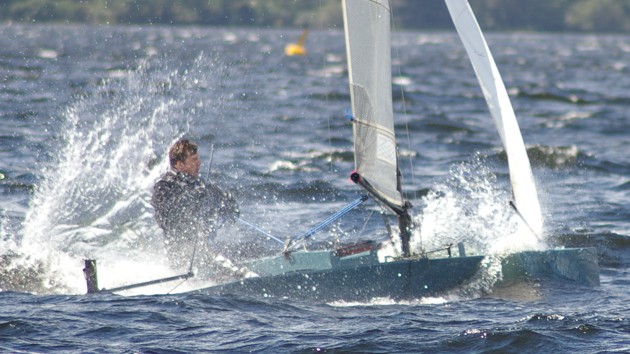
Ulrike_veerkamp.jpg)



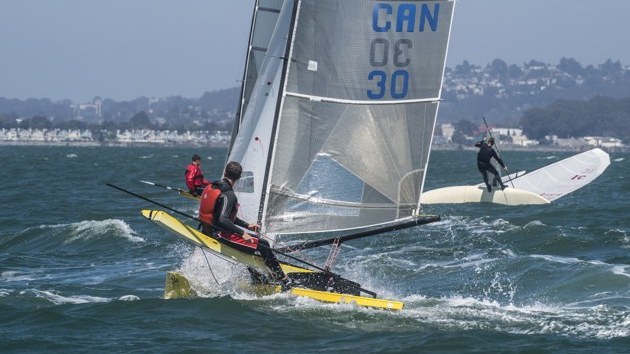
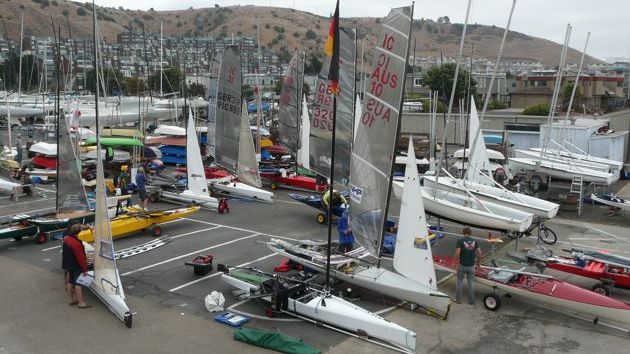

Ulrike_veerkamp.jpg)
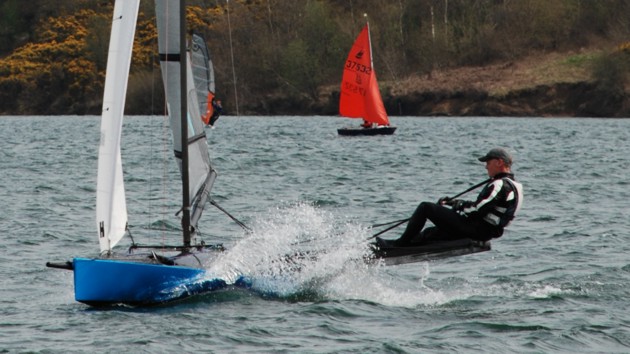
Ulrike_veerkamp.jpg)
Ulrike_veerkamp.jpg)
